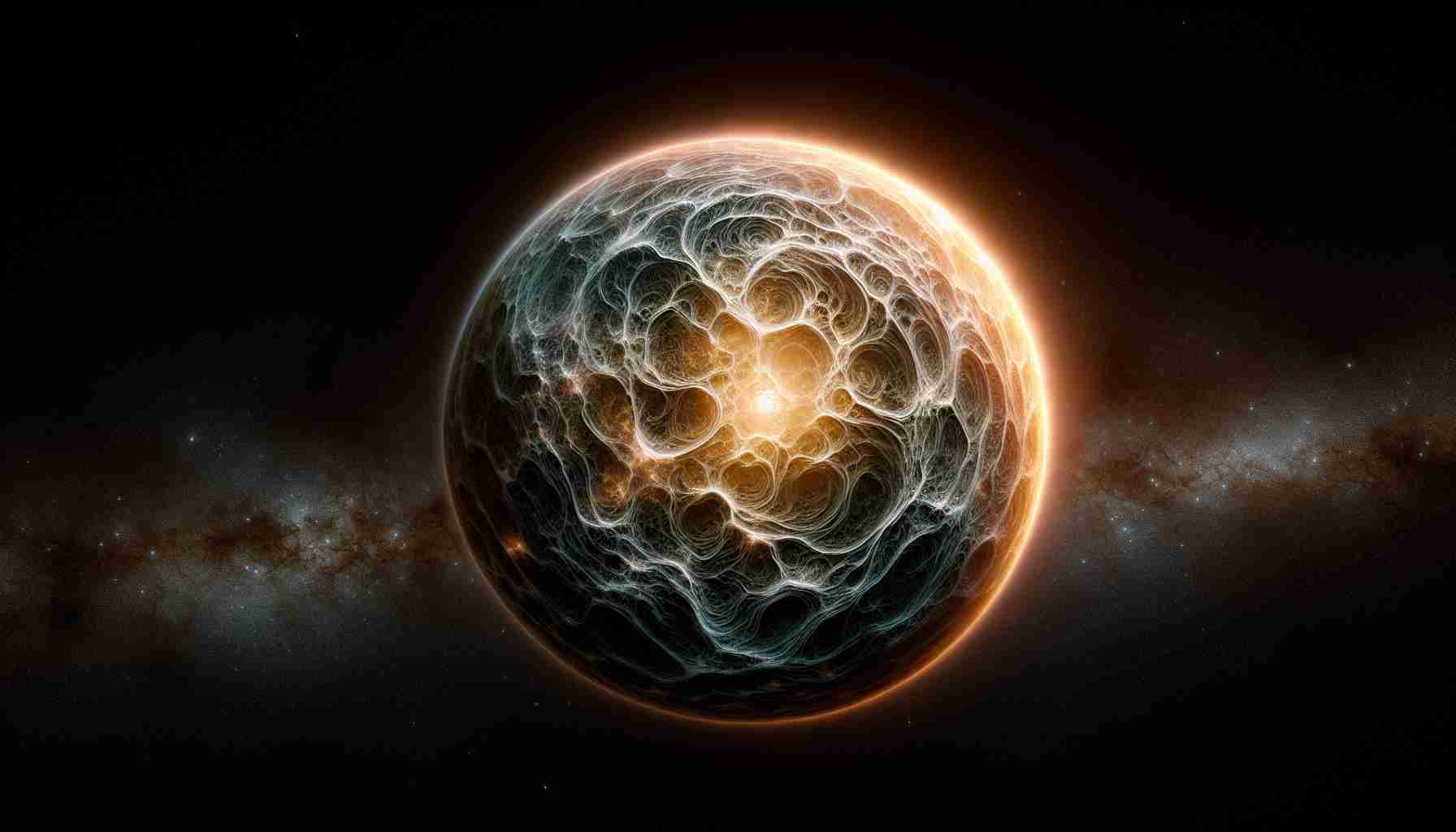In a remarkable scientific achievement, astronomers have captured a detailed image of a star located beyond our galaxy for the very first time, focusing on a colossal red supergiant named WOH G64. This extraordinary star, situated approximately 160,000 light years from Earth within the Large Magellanic Cloud, is believed to be around 2,000 times the size of our Sun and is nearing the end of its life cycle.
The image was obtained utilizing the European Southern Observatory’s advanced Very Large Telescope in Chile, employing a novel instrument called GRAVITY, which merges the light from four individual telescopes for enhanced clarity. The results revealed a misty silhouette of the star encased in an unusual oval structure, indicative of its tumultuous final stages.
Astrophysicist Keiichi Ohnaka remarked on this pivotal moment, indicating that the team’s observations had unveiled a peculiar cocoon around the star. This phenomenon may be attributed to the extensive ejection of stellar material, a precursor to the impending supernova. Scholars are particularly intrigued by the observed decrease in brightness of WOH G64 over the past decade, shedding light on its dynamic evolutionary changes.
The discovery not only enhances our understanding of red supergiants but also serves as a thrilling opportunity to observe significant stellar transformations in real-time. As scientists continue to gather and analyze data, the implications of this research could fundamentally reshape our comprehension of stellar life cycles.
FAQ Section:
1. What is WOH G64?
WOH G64 is a colossal red supergiant star located approximately 160,000 light years away from Earth in the Large Magellanic Cloud. It is believed to be around 2,000 times the size of our Sun and is nearing the end of its life cycle.
2. How was the image of WOH G64 captured?
The image was captured using the European Southern Observatory’s Very Large Telescope in Chile, employing a novel instrument called GRAVITY, which combines light from four individual telescopes for improved clarity.
3. What does the image reveal about WOH G64?
The image shows a misty silhouette of the star encased in an unusual oval structure, indicating a tumultuous phase in its life cycle. This structure may be a cocoon formed from the extensive ejection of stellar material.
4. What is a red supergiant star?
A red supergiant is a very large and luminous star that is in the advanced stages of stellar evolution. These stars are significantly larger than the Sun and can eventually go supernova at the end of their life cycle.
5. Why is the decrease in brightness of WOH G64 significant?
The observed decrease in brightness of WOH G64 over the past decade suggests dynamic evolutionary changes taking place in the star, and it has generated interest in the processes occurring as it approaches its final stages before a potential supernova.
6. What are the implications of this research?
This research enhances our understanding of red supergiants and provides a unique opportunity to observe significant stellar transformations. Insights gained could reshape our comprehension of stellar life cycles and the processes leading to supernovae.
Key Terms:
– Supernova: A powerful and luminous explosion that occurs at the end of a star’s life cycle, often marking the death of a star.
– Red Supergiant: A type of star that is larger and more luminous than a regular giant star, usually at a late stage of stellar evolution.
– GRAVITY: An advanced astronomical instrument that combines light from multiple telescopes to produce enhanced images of celestial objects.
Related Links:
European Southern Observatory
